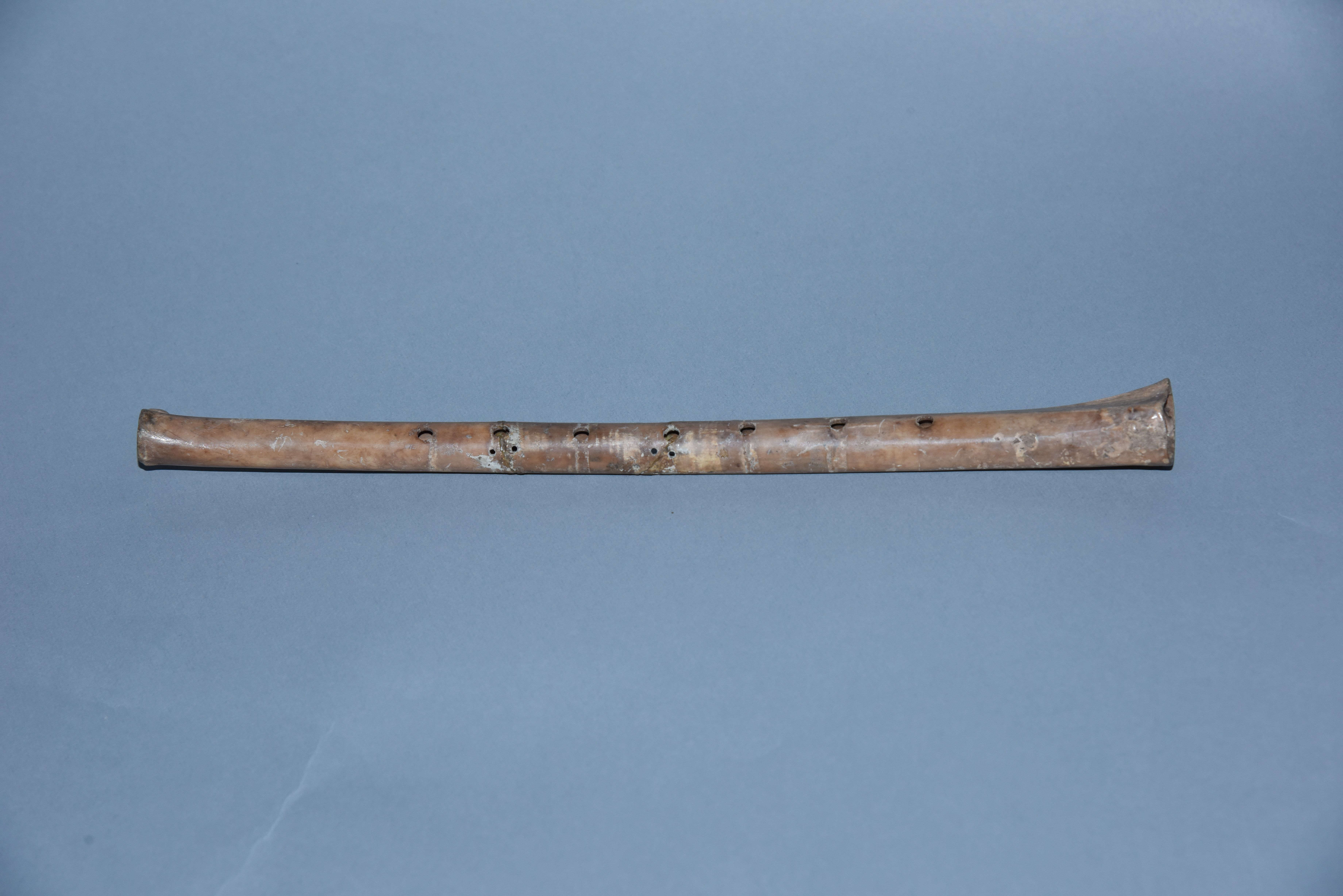Date: Peiligang culture (9000-7000 years ago), Neolithic Age
Provenance: Excavated from Tomb No 282, Jiahu site, Wuyang, Henan province, 1987
Measurements: Length: 23.1 cm
This flute is made from the wing bone of a bird from the crane family. It is shaped like a long pipe, with a series of seven holes drilled in a straight line down one side. Between 1984 and 2001, more than 30 bone flutes were excavated at the Jiahu site, of which this one was believed to be the most cherished by the tomb owner. It holds significant historical value, especially in terms of the craftsmanship of wind instruments.
These flutes feature holes of varying numbers, ranging from two to eight, with a primary focus on seven. They are with a common shape produced by a standardized method of production. Evenly spaced markings are first determined and applied; then the holes are bored. Once the holes have been bored, the instrument is tested and corrections are made, marked and carved again.
Compared to the wind instruments of later generations, this bone flute lacks only the notes liu and gou. It is believed to be the ancestor of China’s wind instruments. Tests by specialists have determined its precise pitch and range. It can produce a six-note scale, which was possibly a slight adjustment of an ancient seven-note scale. This illustrates how, between seven and eight millennia ago, the early peoples of Jiahu were already capable of both performing and appreciating wind instrument music.
The Jiahu flutes have a clear five-octave range, including the first, second, third, fifth and sixth notes in the Chinese musical scale, as well as possible combinations producing the fourth and seventh notes, a possible basis for a seven-note scale. Consequently the discovery of the Jiahu bone flutes have rewritten a portion of the history of music in China.

